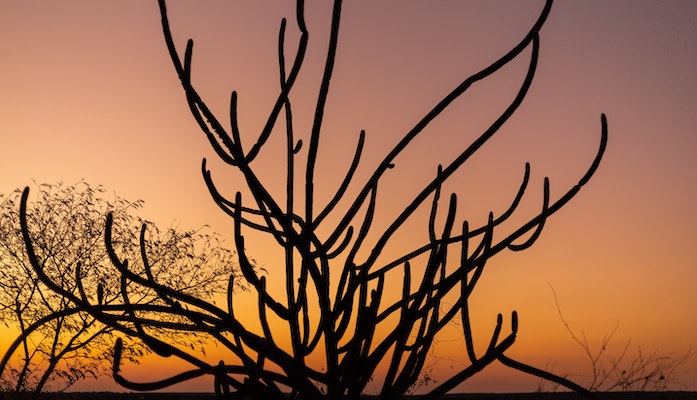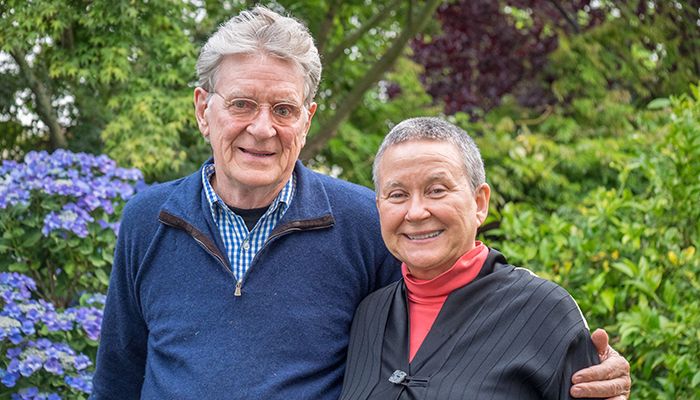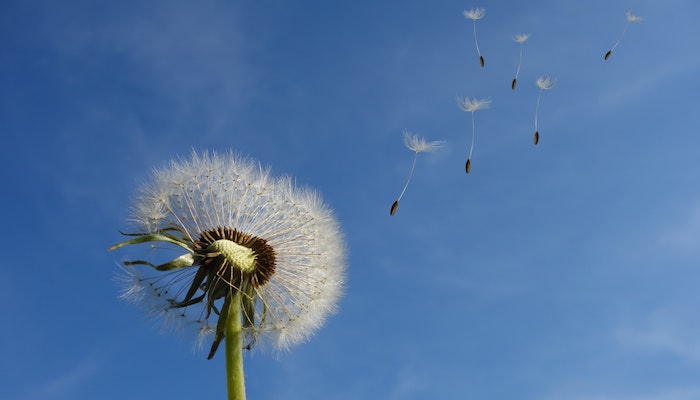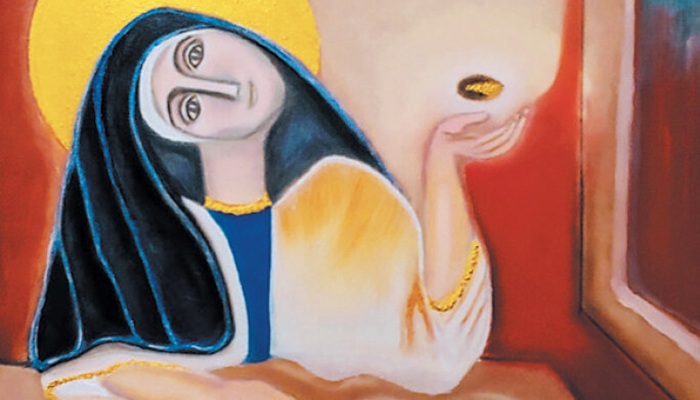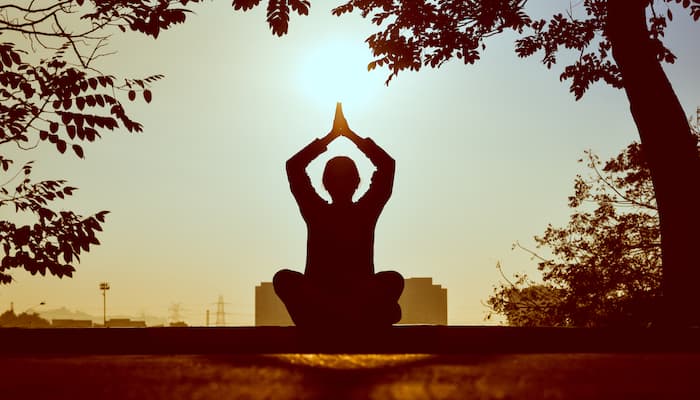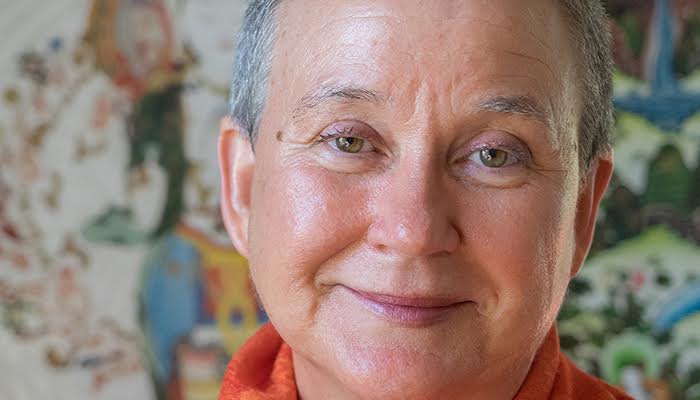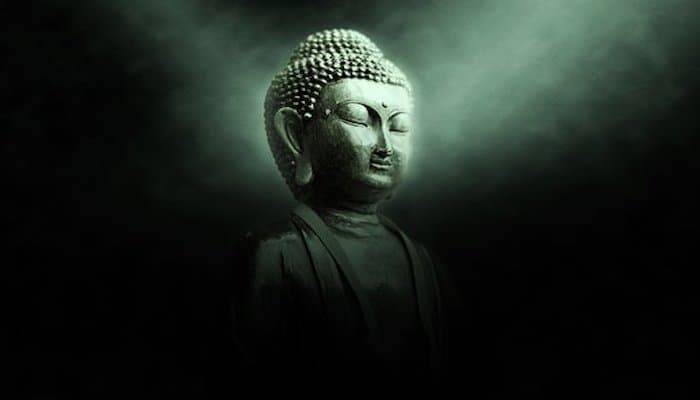Category: Article
Article: The Healing Potentials of Buddhist Philosophy in a Modern Therapeutic Environment
The Healing Potentials of Buddhist Philosophy in a Modern Therapeutic Environment By Scott Menasco, Ph.D. Editors’ Note: Dr. Scott Menasco specializes in applying transformative psychology to support clients in personal growth, recovery from shame, low self-esteem, and trauma. He helps individuals learn to relate to their symptoms and emotions as expressions of inner wisdom, guiding […]
Article: What Is Spiritual Counseling?
By Isa Gucciardi, Ph.D.
“There can be no true healing without the participation of spirit.”
Carl Jung
I am often asked what spiritual counseling is. The answers to that question are many and there are many types of spiritual counseling. For some people, it is about exploring their faith and focusing on the values of that faith as a way to understand themselves and the world around them. For others, it is a way of exploring the world beyond the everyday in order to give context to their experience.
Spiritual Counseling at the Sacred Stream embraces both of these definitions and also offers further opportunities for exploration. When we talk about spiritual counseling, we are talking about the inclusion of spirit in our inquiry into our clients’ presenting issues. This includes helping people define their relationship to spirit as well as learning how the consideration of the spiritual element of any imbalance impacts their understanding of their situation and their ability to transform it.
Article: Healing and Awakening with Buddhism and Shamanism
By Isa Gucciardi, Ph.D.
I’ve been exploring Buddhism and plant medicine and psychedelics for about six years now. One area that I find really absent in a lot of the conversations on psychedelics and spirituality is indigenous shamanism, and it’s hard to find people who know much about that, and also have some kind of Buddhist framework. That’s why I was so excited to hear about your work and listen to some of your talks.
The main question I’m working with in this book is how can we engage with plant medicines as tools or technologies to support awakening? How can we understand the psychedelic experience and also the outputs of psychedelics through a lens that is with the intention of awakening? When I heard about Depth Hypnosis and your work, I thought it would be amazing to talk to you and hear your thoughts on this. You’ve spoken about the catalytic power of shamanic practice and how you feel that there’s potential in that to be harnessed by Dharma practitioners in service of Awakening. This seems to be the focus of your work with Depth Hypnosis, so maybe we could start there.
Article: Tara, Bob, & Me
By Isa Gucciardi, Ph.D.
Robert Thurman and I spent several years teaching a class called Embracing the Sacred Feminine. The class was an exploration of the power of the feminine within Buddhist philosophy. At the beginning, I was surprised that Bob wanted to teach this class together because it was outside of his usual focus in teaching. But it was right in the heart of mine. I had been teaching two classes, the Initiations of the Sacred Feminine and Tracking Spirit in the Birth Environment: The Creative Portal for many years. I was excited to teach what I knew from this perspective and learn more about the power of the feminine within Buddhist philosophy when I accepted his invitation.
At the outset, I realized this was a learning for Bob as well. Although he had an incomparable mastery of Buddhist philosophy, he had never really filtered that mastery through the lens of the Sacred Feminine in the way class required. At first, it was hard to perceive the influence of the feminine beyond the expressions of the female deities, but that quickly shifted for the two of us.
Article: Tonglen – An Integrated Energy Medicine Point of View
By Joanna Foote Adler, PsyD, CHT
Much has been written on the practice of Tonglen, the Tibetan Buddhist meditation practice of giving and taking. Tonglen is a powerful and important practice in many of the schools of Buddhism. I would like to offer some thoughts to add to this literature from the perspective of Integrated Energy Medicine as it is taught at the Foundation of the Sacred Stream, which will hopefully help to focus this practice for western practitioners in a skillful way.
Let’s start by defining Tonglen. Tonglen is a meditative practice for cultivating love and compassion through giving and taking. The focus in this practice is to embrace (rather than reject) unwanted and painful aspects of experience, and to work to overcome fear and develop greater compassion for others. The opportunity here is to change the attitude towards pain and to open the heart as one visualizes dissolving pain. In this practice, one uses the breath in conjunction with a specific visualization. One visualizes or imagines taking in the pain and suffering of others on breathing in, and then visualizes breathing out love and peace for the other.
Tonglen is a practice said to help develop wisdom and compassion on both the relative and absolute levels of reality as they are understood in Buddhist philosophy. These levels are known as the Two Truths. Talking about these levels of reality gets us into deep philosophical water, but for the purposes here we can understand that the relative level of existence refers to the everyday ordinary world experienced as solid and “real.” The ultimate level of reality in Buddhism points to the understanding that reality is actually “empty” in that it is always changing, and that all things depend on or originate from the causes and conditions that came before them. Tonglen points us towards letting go, towards releasing the clinging to our sense of self and to the attachment held when one believes they are permanent beings. In different ways on the relative and absolute levels, Tonglen practice can reverse resistance to pain and help develop the enlightened mind qualities of equanimity, love, and compassion in the face of suffering. The concepts of relative and absolute levels of reality are helpful here in the exploration of how Tonglen practice works.
As the Founding Director at the Foundation of the Sacred Stream, Dr. Isa Gucciardi teaches courses of study in Applied Buddhist Psychology and Integrated Energy Medicine, among others. She teaches that one way to understand Tonglen is as an energy medicine practice.
Article: The Unseen Teacher
By Isa Gucciardi, Ph.D.
Teaching and learning have never been separate for me. As a learner, I have always been keenly aware of the fact that I am being taught from within as I try to master a skill. I can feel the internal teaching change me in a different way than the external learning changes me. I remember being taught how to sight read as I was learning to play the piano. My piano teacher taught me the concept of matching the notes on the page with the notes on the keyboard, but when I read the notes on the page, I could feel an unseen teacher aligning me with the music. I was being taught how to play the piano, but I was also learning a new alignment to the world.
The experience of participating in learning in the external educational environment and receiving teaching from within simultaneously is a phenomenon that has revealed itself to me in different ways bit by bit over time. This experience has many facets to it, but it is always present in every teaching situation regardless of the subject being taught or whether or not I am ‘officially’ the teacher or the student.
Article: To Weave a New World: Shamanic and Tantric Practice
By Isa Gucciardi, Ph.D.
To enter the world of Tantra is to enter a world beyond the ordinary. Through a series of catalytic processes, the spiritual seeker is drawn along a path that promises nothing less than the revelation of the nature of reality. This is a promise that also lies at the heart of shamanic practice. Yet the ‘reality’ that reveals itself when the shamanic initiate steps beyond the threshold of ordinary awareness is conceived of differently than that of Tantra.
The reality that is the focus of Tantra lies in the understanding of the human mind. The reality that is understood through shamanic practice emerges through an intimate interface with the unseen powers of the natural world. These two realities are not exclusive from one another, but the thrust and focus of these two practices are at least initially different.
Both systems provide stages of development to educate the initiate as they deepen their understanding about the nature of reality. These stages of development constitute the heart of the practices. Let’s explore these wisdom traditions further and deepen our understanding of how these two paths cross and separate in the process of providing an education about the nature of reality.
Article: Addressing Self-Harm through Depth Hypnosis
By Joanna Foote Adler, PsyD, CHT
As a human beings, it is not uncommon to have experiences or feelings arise that we feel we cannot tolerate. Emotional pain can be incredibly hard to experience, and it is normal to reach for some way to cope in these kinds of situations. When a situation feels intolerably intense, people will naturally look for a way out of their suffering.
There are many ways to cope with suffering. They range from the most positive strategies, such as compassion, skillfulness, and love, to the quite negative, like self-blame, self-judgment, and self-harm. In these latter strategies people may mistakenly believe they are doing something about their experience by punishing or harming themselves. Perhaps they imagine that if they punish themselves enough, they will not continue to make choices that cause pain. Or perhaps they imagine that if they no longer exist in a body, they would be free of suffering. From a Buddhist point of view, this kind of thinking is seen as a fundamental misunderstanding, the kind of misunderstanding that actually leads to more harm and more pain, as negative coping strategies are piled on top of already existing suffering.
I would like to offer a few thoughts that may be able to help in these kinds of situations which ring true in the context of the spiritual counseling model of Depth Hypnosis.
Article: Book Review: A Fearless Heart: How the Courage to Be Compassionate Can Transform Our Lives
By Barry Lipscomb
Reading A Fearless Heart was a very powerful, transformative, and healing experience for me personally. This was heightened by reading the book the same week I began the Sacred Stream’s Applied Buddhist Psychology 1: Entering the Stream class, and started practicing Shamata meditation. It seems my heart is breaking open and expanding in new directions, as if compassion and loving-kindness is the last frontier.
I find myself already genuinely wanting other beings to be free of suffering, spontaneously doing small acts of kindness with the recognition that, just like me, all beings want to be happy. By the middle of the week in which I was reading the book, I began a new practice of engaging someone from work each morning by text or Slack, to just say hello and ask how they are doing. It was only later in the week that I connected this new practice to my reading of Jinpa, and my morning Shamata meditation.
Article: Book Review: Julian of Norwich: Wisdom in a Time of Pandemic
By Isa Gucciardi, Ph.D.
Matthew Fox’s new book, Julian of Norwich: Wisdom in a Time of Pandemic is educational in many ways. Not only is it a revelation about a female Christian mystic whose wisdom should be more widely known, but it is a window into the history of 14th century Europe, and the long-lasting effects the bubonic plague had on society and culture. This book could not be more timely.
Reverend Fox has been an ardent preservationist of the mystic streams of thought within Christianity throughout his long career. He has kept this esoteric philosophy front and center in popular discourse in a way that has served thinkers from all traditions. He wrote the first modern book about Hildegarde von Bingen, the 11th century Benedictine nun who founded her own abbey and infused the work there with the fruits of her visions, her poetry, and her prophesy.
Like Hildegarde’s contributions, Julian of Norwich’s work informed Christian thought in ways which have not always been fully acknowledged or appreciated by the church. Both women’s offerings receive the attention they deserve through Fox’s efforts. In spite of the fact that Julian of Norwich’s Revelations of Divine Love is the earliest surviving book by a woman ever published, it is not widely read. Yet, her writings about her visionary experience and the ecstatic relationship with the Divine are still as profound, fresh and universal today as when they were written. We are lucky to have Fox point our attention to her reflections on her life and the times of plague through which she lived.
Article: Bridging the Worlds between Life and Death with Shamanic Practice
By Isa Gucciardi, Ph.D.
As part of Tarka’s “On Death” issue, I have been asked to speak about the approach to death that my tradition, that of shamanic practice, follows. Some of the questions I have been asked to address are: What is death from the perspective of your tradition? What transmigrates, if anything, from the perspective of your tradition? What key text, verse, or poem offers insight or clarity around the experience of death? How has an experience of death in your life informed your teaching? What is a practice that directly addresses our relationship with death? I have tried to address all of these questions in this short exploration of the shamanic worldview regarding death.
In his book about the Australian Aboriginal experience, Voices of the First Day, Robert Lawlor offers a statement regarding Aboriginal views about death which are reflective of a larger, more general shamanic worldview. He says, “Death, in the Aboriginal view, is not a termination or a dislocation from this world to another; rather it is a shift of the center of one’s consciousness to invisible, subjective layers that are substrate to, and involved within, the natural world of mind and matter.”
Article: The Language of Image in the Clinical Setting
By Isa Gucciardi, Ph.D.
The language of image is one we speak every night as we dream. It just takes a little prompting for us to be able to develop our latent facility with this language. Simple questions, such as “What does this image remind you of?” open the messages in the images in powerful ways.
People who listen to the images of their dreams find this out very quickly. In traditional societies where the journey was practiced, the journey practice was often paired with the practice of listening to dreams.
Article: Interview: Plant Medicine as a Spiritually Transformative Experience: Challenges to Integration in the Modern Context
ACISTE recently had an opportunity to interview Isa about her views on the use of psychotropic plant medicine for psychological and spiritual transformation. Given the recent resurgence of clinical interest in the use of psychedelics for treating mental health concerns, we hope this two-part (Feb/Mar) interview will encourage therapists and others to further educate themselves about the unique integration needs of those who choose to engage plant medicine for healing and guidance.
Article: Book Review: Tsongkhapa, a Buddha in the Land of Snows
By Isa Gucciardi, Ph.D.
Tsongkhapa, a Buddha in the Land of Snows is Buddhist scholar Thupten Jinpa’s contribution to Shambhala Publications’ remarkable series, The Lives of the Masters, which seeks to memorialize the contributions of some of the most important thinkers in Buddhist philosophy. Tsongkhapa, who lived from 1357-1419, is considered one of the greatest Buddhist philosophers and teachers that ever lived.



